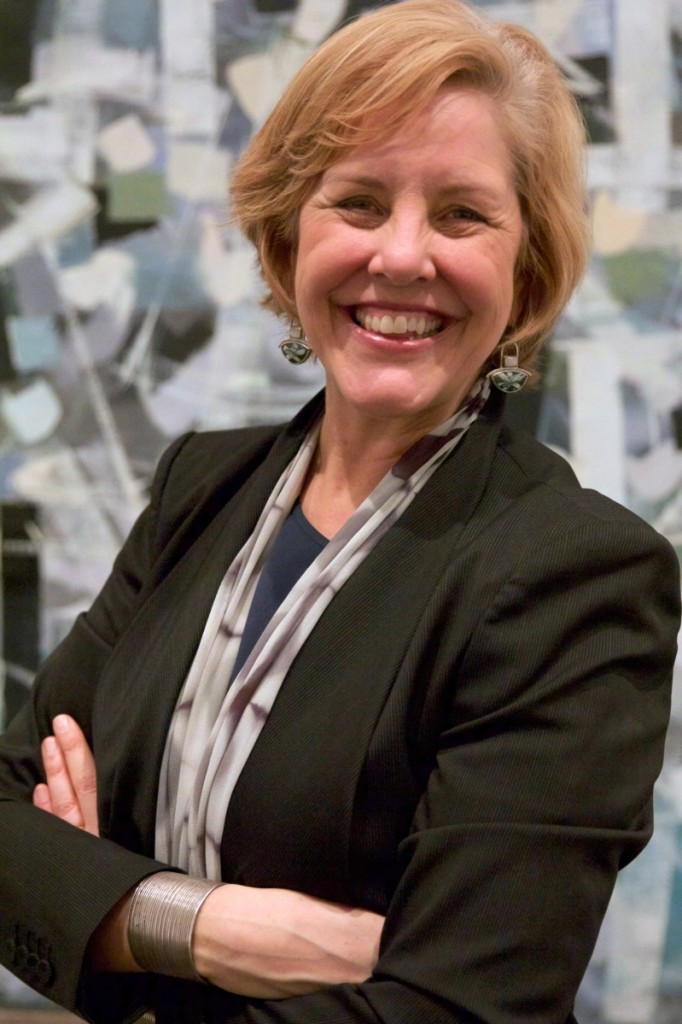
Brooke Davis Anderson is the Edna S. Tuttleman director of the museum at the Pennsylvania Academy of the Fine Arts (PAFA), having joined this past summer. She has worked for museums in major cities from Los Angeles to New York City and New Orleans. Just before she assumed the position at PAFA, she described the institution as “uniquely positioned to explore the American experience,” adding, “I can’t wait to get started!” So, a little more than a half year into the job, we asked her to take stock of how she is feeling about it.
How are you feeling about it?
I feel the same way – even more strongly. I feel great. I’m having a wonderful time with the team here at PAFA. It’s a team full of smart, passionate colleagues who are committed to the city of Philadelphia and also the wider art world, nationally and internationally. And I’m really liking Philadelphia.
How have your experiences thus far shaped you and brought you here?
To the list of previous cities, I would want to add one other place. My career started in North Carolina, directing a state university museum at Winston-Salem, a historically black college. For many reasons, that experience has shaped my world view and my professional stance as well. Even though Winston-Salem is not a major city, that experience for much of the 1990s has continued to feed the way that I work now. I would describe myself as a very outward-looking director. I’m thinking pretty consistently about what is happening with the audience when they encounter our work – whether it’s an exhibition, our collections or educational programming. I try to be their advocate.
How far ahead do you plan? And what are some challenges you are facing?

“Sick a-Bed” by Elizabeth Okie Paxton (1877-1971), 1916, oil on canvas. Pennsylvania Academy of the Fine Arts.
Since I started in June, we have been working steadily on an exhibition schedule that’s about five years out – some of it’s a pencil sketch and some of it’s penned-in plans, but we’ve got some really great plans. Nothing that I can share just yet, but the plans for 2020 and 2021 are pretty exciting. Keep in touch. Rather than challenges – because I’m so new at the job – I think more about opportunities: building audiences through collaborations in partnership with our school because, as you know, PAFA is both a museum and the oldest art school in the country. Telling a unique PAFA story – I’m looking forward to crafting that narrative with my team.
What is it about PAFA’s unique characteristics that you are most excited about?
I don’t think that many people recognize that we’re two buildings in a plaza. We have this small, outdoor space and we have these two really different buildings. And the way that we use these spaces is a lot of what I’m thinking about right now.
You have said community outreach will be a key goal. Can you tell us a bit about what you are working on?
We have a great show opening next fall that I think everyone on campus is really excited about. We’re doing a midcareer retrospective of the New York-based artist Rina Banerjee. Rina was born in India, lived in London and now lives in New York City and sees herself as a “global citizen.” What I will tell you is that next fall when you come into our historic landmark building, we will have a large, soft fabric Taj Mahal in hot pink. The show will explore the use of materials in a global, accumulative way, as a result of Rina’s travels – they range from precious to disposable and plastic. She privileges food and poetry. All of that will play a role in this exhibition in all three sites.

“Three Wise Men Greeting Entry into Lagos,” 2008, by Kehinde Wiley (b. 1977), oil on canvas. Pennsylvania Academy of the Fine Arts.
You’ve written extensively on Outsider artists, particularly the late Martin Ramirez. If you and he could have a conversation, what’s the one burning question you would ask him?
There are so many. First, since Ramirez spoke Spanish and I don’t, I would need one of his granddaughters with whom I’m very close to translate. As you may know, I had the real honor of discovering 140 new works by him about ten years ago, which doubled his oeuvre and doubled our understanding of him – a curator’s dream. I would ask, Is there more work? Where is it? I’ve always believed there is more work to be uncovered.
What’s your favorite piece of art on display at PAFA?
There are two actually that I really like for different reasons. One is Elizabeth Okie Paxton’s “Sick a-Bed,” painted in 1916, which looks like an American Vermeer and was exhibited here about 100 years ago. The other is Kehinde Wiley’s “Three Wise Men Greeting Entry into Lagos,” from 2008, which we acquired about five years ago. It’s just this large, gorgeous portrait of three African American men who are in the poses of a Sixteenth Century altar piece.
-W.A. Demers




